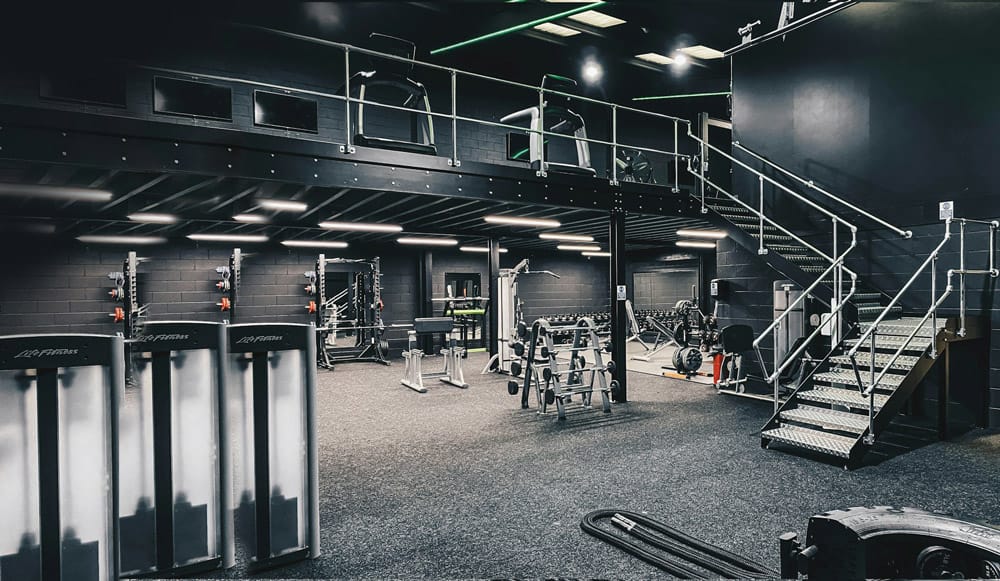Can Smart Home Gyms Replace Traditional Workouts?

Our fitness approaches are transitioning. Branded interactive smart home gym systems have generated increasing uncertainties between athletes and beginner-level fitness consumers to discover whether their home setups can perform equal functions of conventional gym exercises.
Home workout fans trust their at-home convenience while athletic enthusiasts stay devoted to gym equipment and gym atmosphere. We'll break down the pros and cons of both options by comparing cost, convenience, workout effectiveness, motivation, and community support, so you can decide which approach fits your lifestyle best.
Understanding Smart Home Gyms
Smart home gym manufacturers add expansive capabilities beyond simplest machines such as treadmills or dumbbells. These technological solutions use state-of-the-art innovations such as sensor integration and built-in display systems together with AI coaching alongside real-time response data.
Indoor fitness systems like Mirror, Tonal and Peloton provide users with workout options ranging from strength training through cardio or yoga recovery sessions. Modern fitness platforms contain automated resistance controls alongside motion tracking systems and virtual instructors and performance analytics capabilities.
Tonal utilizes digital resistance technology alongside guided strength sessions as an alternative for traditional weight stacks. Peloton lets users compete and track improvement through its combined features of stationary cycling classes and live real-time leaderboards. Mirror establishes a discrete presence in room design while offering instructional fitness classes for dance and kickboxing and HIIT training.
These home systems replicate the workout diversity and program design and workout encouragement found inside gym environments, while eliminating home travel requirements.
Comparing Costs: Short-Term vs. Long-Term
Cost considerations lead most people to pick between smart home gym equipment and traditional fitness facility membership. Gyms have cheaper initial payments than gym memberships but become costlier as time passes. The amount fee-paying gym members pay differs by facility type and location between $30 and $100 monthly. Boutique studios charge rates higher than typical fees per class. These costs may present manageable class options, but their yearly total will exceed many budgets.
Smart home gyms ask users to commit substantial upfront money. Tonal systems and Peloton bikes and Mirror devices come with price points starting at several thousand dollars and $1,500 respectively. Users must pay between $30 and $60 monthly to access workouts on most smart gym platforms using subscription models. The term "consistent users" describes those for whom the current model offers better cost savings versus standard gym membership fees together with fitness class group sessions expenditures.
The cost-effectiveness of these two options depends on an individual's level of commitment. A smart home gym will prove more cost-effective for those who plan to consistently participate in exercise activities. Their regular exercise commitment will generate better value from a smart home system. The traditional gym represents fewer upfront financial risks if a person is uncertain about staying consistent.
Convenience and Accessibility
Smart home gyms deliver convenience at the forefront of their features. Home workout systems that function fully at your place eliminate all travel delays as well as scheduling conflicts and equipment waiting issues. Quick sessions fit through your schedule between meeting slots while still allowing you to exercise early morning or late at night. Patients with routine uncertainties alongside children under 10 or travelers benefit more from the flexibility provided by home exercise units.
Traditional gyms create specialized exercise facilities which do not double as other uses. When individuals take a road trip to their gym they obtain mental focus for a workout session. Being apart from home distractions helps individuals stay more consistent in their exercise routines and perform better. Home gym enthusiasts struggle to recreate all facilities which include locker rooms, showers, pools and group studios at home.
Most home spaces are too limited for gym equipment while private workout conditions create blocked situations in many residential areas. Home gyms lack practicality for the majority of potential users.
Also read: How VR and Gaming Are Changing the Way We Exercise
Workout Effectiveness and Variety
The effectiveness of home gym equipment depends on users' exercise habits instead of their workout's location. Smart home gyms deliver directional exercise plans together with live instructional data and sequential advancement schemes. Tonal implements automatic resistance adjustments together with tracking features and form improvement instructions.
Trainees gain motivation through instructor-led classes in Peloton and live real-time movement comparisons between users and a trainer in Mirror. The tools from these systems support most individuals who want to develop strength while also enhancing their cardio training while maintaining regular exercise patterns.
Traditional gyms provide users with more diverse workout machines. The specific needs of advanced lifters and powerlifters and bodybuilders demand access to specialized equipment including heavy free weights and custom routine machines and both squat racks and cable stations. Individuals need lots of room and major investment commitments to duplicate these gym systems within their home spaces.
Smart systems are making significant progress with new technology implementations. Tonal serves the strength training community with heavy resistance units that fit into space-saving designs to deliver essential workout functionality. Traditional gym equipment provides physical weights that many users need while high-resistance lovers will feel limited by most home exercise stations after sustained use. Although gym services may be difficult to replace smart home systems can offer several comparable alternatives.
Motivation and Accountability
Personality shapes motivation levels. People who succeed independently need gym environments to maintain their focus. Smart home gyms introduce user interaction features to solve this issue. Peloton promotes healthy competition with their live leaderboard that interacts with community-wide progress milestones. Mirror instructors directly interact with users through live classes. Tonal uses advanced strength score technology together with adaptive training methods to allow users to break through fitness plateaus.
Despite interactive features users often lose their workout consistency when they exercise solo. Fitness enthusiasts lack physical trainer supervision that's coupled with friendship between gym members and sturdy gym peer networks. Gyms create organized systems and communal surroundings. People's presence motivates people while scheduled times with personal trainers help establish accountability systems that don't fade away easily.
Gym environments don't suit all individuals. Crowds make some people uncomfortable while others get anxious in mixed settings. When patients choose a home gym they obtain safety because their progress remains independent from outsider evaluations.
Community and Social Connection
Communities emerge naturally at conventional gyms because of member interactions. Traditional gyms show members the same people repeatedly which leads to friendship development and impromptu social interaction. Experiencing group fitness classes alongside shared challenges alongside casual locker room conversations leads to a fitness environment that supports social engagement.
The first smart home gym systems created virtual networks to support community building. Peloton riders develop tight-knit virtual groups to help each other through workout support and track their community collective objectives. Some platforms integrate event organization with leaderboards and network challenges so members feel group unity. Mirror offers personal virtual training through a one-on-one interface for trainers who work from their home environment.
Digital authenticity of gym spaces along with their spontaneous elements still remains challenging to recreate. Users who find joy in class group behavior while sharing fitness info and trading ideas while pumping up off others' energy will find home gyms lack that social environment. Different individuals prefer avoiding this kind of social interaction for their workouts.
Which One Is Right for You?
People who seek privacy and flexibility along with technology assistance find smart home gym systems best suited for them. Smart home gym systems remove time barriers and travel restrictions while providing professionally organized fitness programs through their virtual platform. People who feel comfortable exercising on their own will benefit most from these systems because they seek to build sustainable exercise routines.
Personalized real-time interaction remains the key distinguishing advantage of traditional gyms over smart systems which deliver unmatched equipment diversity. Additional training options which traditional gyms provide remain beyond the current replication capabilities of smart gym systems.
Personal choices together with your goals as well as available space and financial resources will determine what you should choose. Fitness followers integrate both home smart system use during weekdays with weekend gym visits for specialized training. This combined strategy creates an optimal fitness environment which unites home convenience and gym diversity.
Final Thoughts
Smart home gyms are not transient trends. These fitness solutions combine innovative technology with practical design to meet contemporary lifestyle demands and provide complete fitness results when used regularly. The compelling alternative which smart home gyms present to standard gym settings meets the needs of numerous exercisers despite the fact that some traditional gym attendees will continue to prefer local health clubs.
Your fitness results depend on determining which approach fits your lifestyle best and remaining committed to maintaining exercise routines through your preferred method. The most crucial component of achieving fitness success involves sticking to regular exercise under your preferred workout system.



